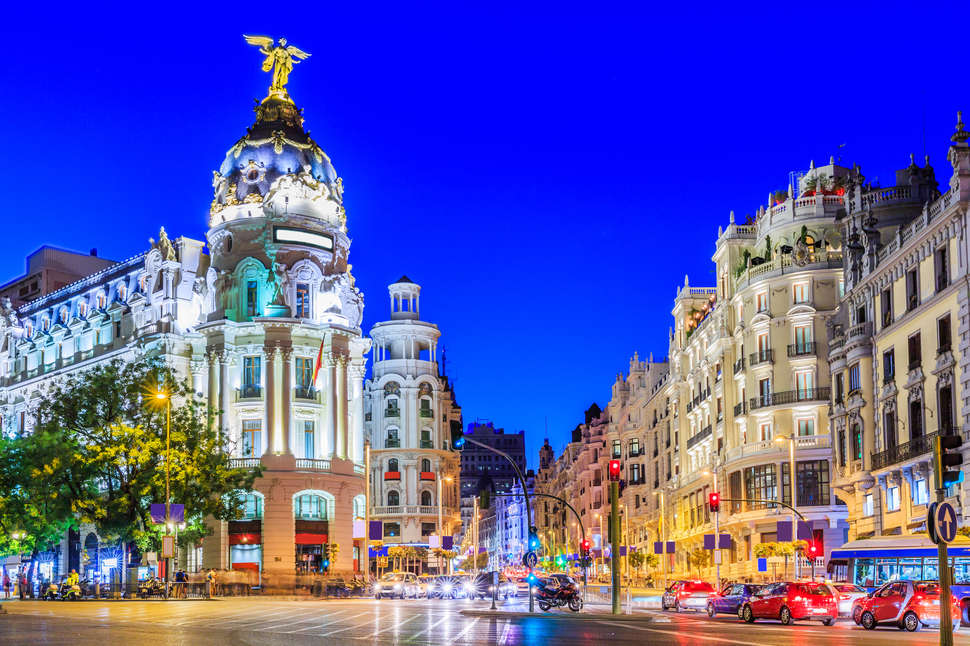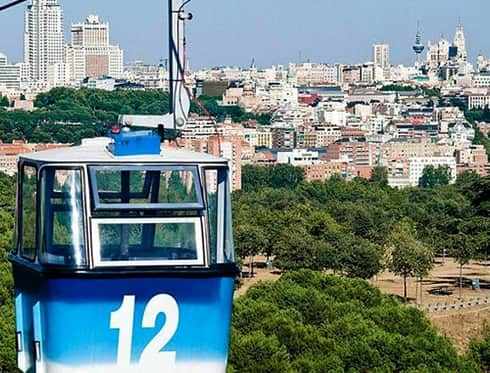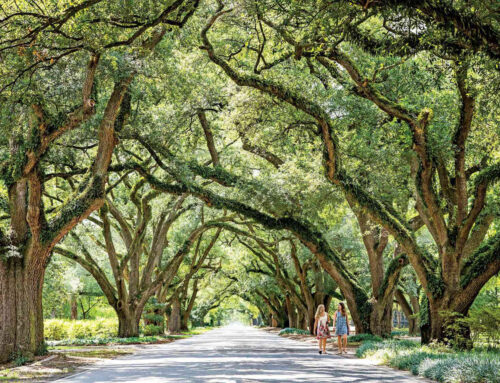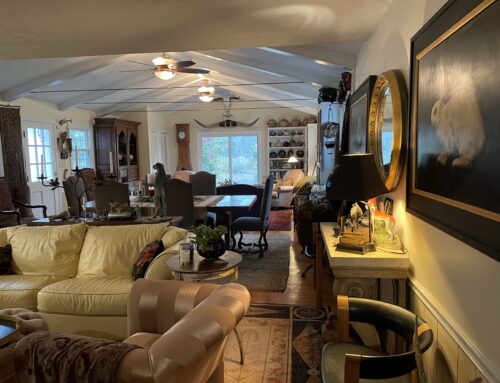By Cathy H. Burroughs, International Travel Writer & Adventure Blogger, journeyPod.com
All roads in Spain literally lead from Madrid, its central and continuous capital since 1606. With its cosmopolitan boulevards, phalanxes of period architectural showplaces, non-stop night life, world-class cultural lineage, ebullient urban parks and dignified historic plazas, Madrid’s and Spain’s starting point can be found at the Puerta del Sol’s Kilometer O. It is from here that all six of its major roads depart and Spain’s map originates.
Without an obvious iconic brand – like Paris with its Eiffel Tower or Rome’s Colosseum , elusive Madrid, Spain’s most populated city, is inscrutable and requires some formidable treasure-hunting to discover its, sometimes, elusive gold. Luckily, Madrid Destino is a hotbed of salient suggestions and urges us not to miss such notables in all of Spain as the formidable souls of the city: the Plaza Mayor and the Puerta del Sol, as well as the formidable La Puerta de Acala, a breath-taking Neoclassical 5-arched triumphal gateway located in the Plaza de la Independencia and the galvanzing buzz of Madrid’s hottest thoroughfare, the Gran Via Avenue sometimes referred to as “Spanish Broadway” for its shopping, hotels, theatres and 20th-century revival architecture. For plenty of hot tips to decipher this iconic and jazzy metropolis, check out www.esmadrid.com/en.
Beloved by the bullfighting-obsessed famed American writer Ernest Hemingway and home to hit singer-songwriters, son and father, respectively, Enrique and Julio Iglesias; actress Penelope Cruz and the brilliant, Academy Award-winning director/filmmaker Pedro Almodovar known for “Women on the Verge of a Nervous Breakdown,” Madrid has weathered and survived a complicated and checkered history, and boasts some of the world’s greatest art collections.
We wrangled our way into two of Madrid’s, and arguably the world’s finest: the Prado, (one of Europe and beyond’s most visited sites whose collection of Spanish and worldwide masters, some think, may rival Paris’s Louvre; It was here Pablo Picasso once served as absentee director,) and the modern Reina Sophia. Its captivating and edgy indoor and outdoor contemporary collection is introduced with the gigantic 64 foot Roy Lichtenstein black and white striped sculpture which dramatically straddles its courtyard entrance. These eminent two are exceptional specimens of the city’s more than 44 museums. It was these, and more for which Madrid proudly bore the mantle of European Culture Capital in 1992. For two weeks we roamed this illustrious and mysterious city, aiming, too, to unlock its surrounding towns and villages (Avila, Segovia and Salamanca – we regretfully missed Burgos and its famed cathedral) in the capable hands of outstanding guides provided by the region of Castile and Leon.
Nearly unchanged since the Middle Ages, these thrilling towns are a time-warp, easily accessible in one to two hour day trips via Madrid’s superb and affordable train system. (See Part 2 for details). The capital and the time-travel afforded by these almost perfectly-preserved nearby towns, make for vivid, mostly walking, history lessons of epic proportions. Many forget that the Spanish Empire was once one of the largest and first global empires in history and responsible for Christopher Columbus’s expedition, and ultimate capture of the New World. By contrast, Madrid reinvented itself in the 70’s, embracing democracy and hurling itself head first into its present day Dionysian hedonistic live music-dance party of political, sexual and cultural “movida,” or free-for-all. It was this post-dictator Franco counter cultural frenzy where just about anything went, and still does. The Madrilenian legendary zest for partying til dawn; healthy Mediterranean eating with plenty of primo olive oil; drinking fine Rioja wines and Agua de Valencia (apparently it’s uncool to order sangria); together with the legion collective appetite for life may be their secret recipe for surpassing the Japanese for longest life span by 2040.
To get one’s bearings in Madrid’s sometimes cacophonous layout, unpredictable bus routes for the uninitiated, and heady cultural mix, catch your breath and stop by Madrid’s invaluable resource, the chicly decorated HQ for Madrid Destino (www.esmadrid.com/en), the city’s key tourist hub mentioned above, found in the inner sanctum of the porticos of its aforementioned main square and heart of its Hapsburg heritage – the Plaza Mayor. Just as we were about to throw up our hands, the tourism office threw us a couple of lifelines to maneuver the city’s whirl by way of tickets to both their modern and ancient on/ off bus tours, entrance to several of the city’s museum gems and to its 92-meter former transmission tower, the Faro de Moncloa observation deck for fully panoramic outlook and its surrounding Sierra de Guadarrama mountains.
We also took the Teleferico de Madrid cable car with exalted alfresco vantages above river, park and another full skyline. Linking the Parque del Oeste with the Casa de Campo, its a dangling and breezy take-your-life-in-your-hands refreshing joyride of an adventure.(www.teleferico.emtmadrid.es).
Yet another vantage was from the top our double decker bus as we eyed the medieval chapels to French style art deco and striking contrasts from its baroque Royal Palace to its titan glass and steel Telefonica Building, the continent’s first skyscraper. At dark, we zagged in cabs or hoofed our way through the intricate maze of small plazas where live music, dancing and imbibing with gusto rule the night – and we mean all the night. We wended our way through the snarl of outdoor cafes and even landed some dangerously delicious vegan fare at Viva Burger, a brazenly healthy burger and fries joint, walking distance to our flat in the Rastro neighborhood, site to the wildly-popular Sunday flea market.
Buen Retiro Park’s Crystal Palace
Serendipitously one day, we stumbled upon the exquisite 350 acre, 15,000 tree and rose garden-filled Buen Retiro — Madrid’s largest public green space and its own version of New York’s Central Park. As you make your way in, prepare for a kaleidoscopic show of colorfully dashing skate boarders, scooters, rickshaws, flashes of dotted outdoor food and souvenir stands, street performers, a full- blown Tai Chi class, boaters on its lyrical lake, public displays of every possible type of affection as well as its impressive statuary – military, angelic and the only one known to be dedicated to the devil, himself. Deep into its bucolic acreage, we would find its piece d’ resistance – an all glass prismatic and enchanting Crystal Palace. Perhaps therewe had come face to face with the pure joyous and exuberant spirit of Madrid in all its mad and resplendent glory?
Buen Retiro boaters on lake
After our Madrid staywe headed to Spain’s southern coastal Andalucia, home to the classic Spanish archetype and to the quintessential gypsy soul of Spanish lore. We visited the captivating city of Granada, near where famed writer Lorca was born and its bewitching hilltop Moorish Palace and elaborate gardens the Alhambra, one of the world’s’ wonders . Do not leave Spain before spending some serious time here.
Granada’s Moorish fortress and gardens Alhambra
A VIP bus ride away is the lesser-known find – the small-scale Spanish city of Jerez. Opening unexpectedly, arriving in Jerez is like entering a pop-up book or peering into the inner layers of an ornate Easter egg. With its sublime restaurants and much to see and do, it is definitely worth a several day stay. As the delightful cradle of expert and phenomenal flamenco (try to see flamenco wherever you go in Spain), sherry bodegas (Thank you, Sandeman for the samples and tour), and the most extraordinary display of horsemanship in the renowned Royal Andalusian School of Equestrian Art’s horse show with its imposing, graceful and athletically supreme solo and grouped stallions in dazzling dressage with their Olympic gold- winning fully-outfitted riders of unsurpassed virtuosity.
Then on to Lisbon, Portugal; as well as Portugal’s idyllic seaside coastal stretch Faro in The Algarve and the extraordinary Gothically-imagined castles and choreographed grounds of the boggling UNESCO town of Sintra – a short train ride from Lisbon that MUST be made!.
Cathy H. Burroughs is an international travel writer and adventure blogger who has published widely and who often travels for extensive time periods to Europe and all over the US. One of her well-kept secrets to affordable and lengthy travel is by way of www.homeexchange.com for which she expresses her utmost thanks. Her travels to Spain and Portugal were supported in part by Madrid Destino; the tourism board of the Region of Castile and Leon, the tourism boards of Granada, Spain; Lisbon,Portugal and others including in Jerez: three exceptional flamenco shows, the Sandeman noted sherry bodega, the miraculous horse show of the Royal Andalusian School of Equestrian Art and Lisbon, Portugal’s inspiring aquarium Oceanario de Lisboa for which she is most grateful. A huge debt of gratitude goes to the exceptional Soraya Zoudi of the Tourist Office of Spain in Coral Gables, Florida who went above and way beyond. www.journeypod.com





